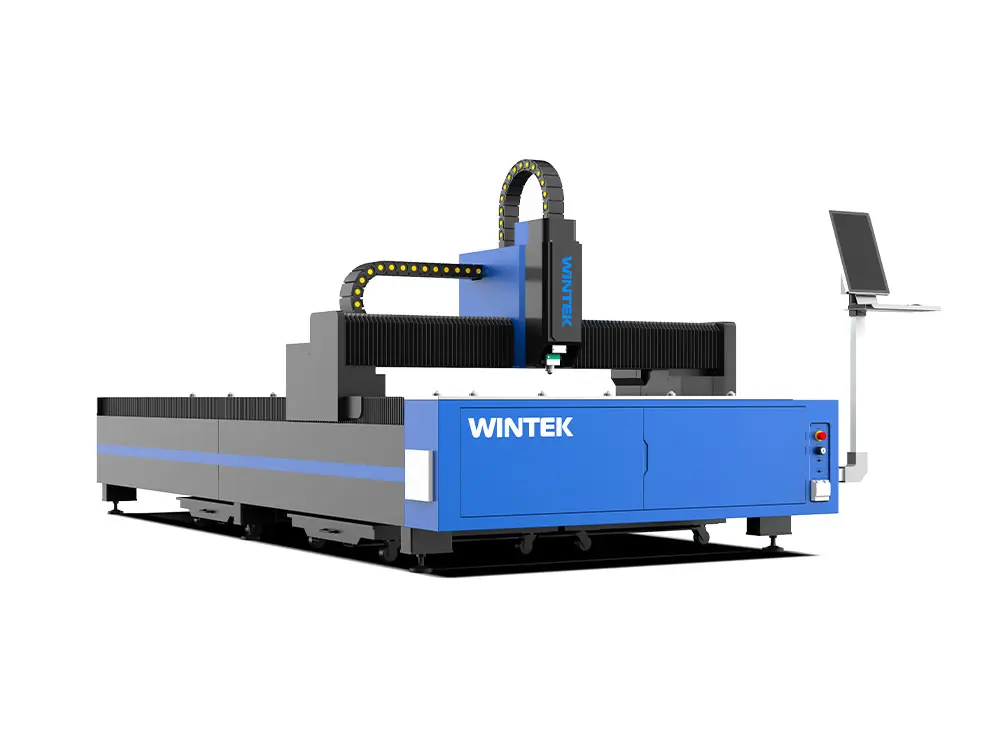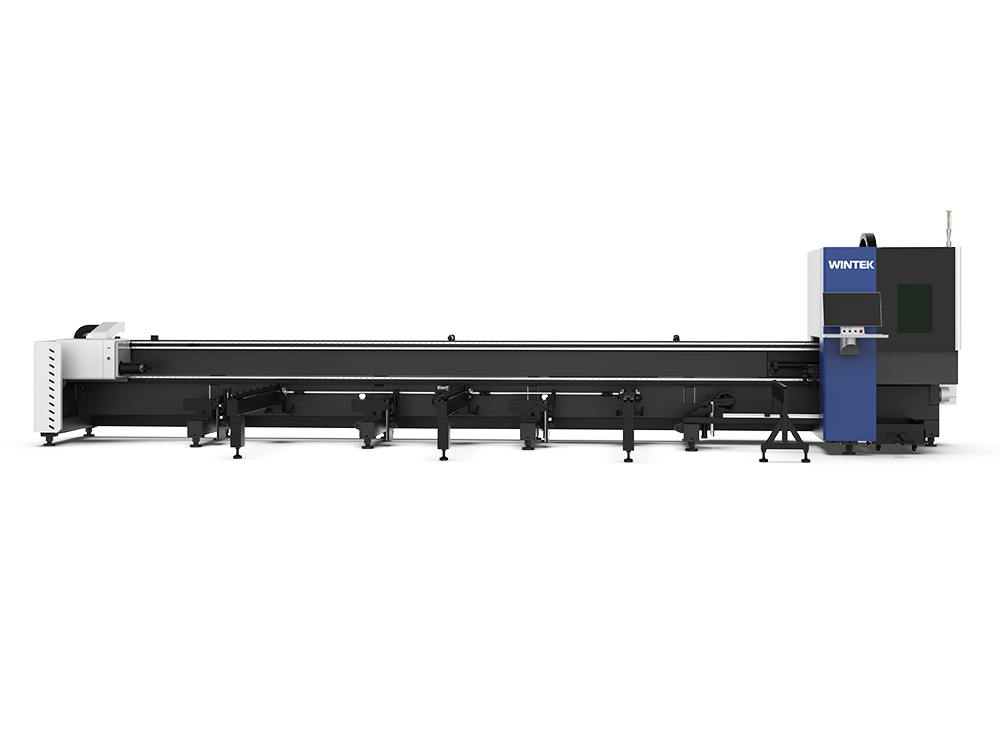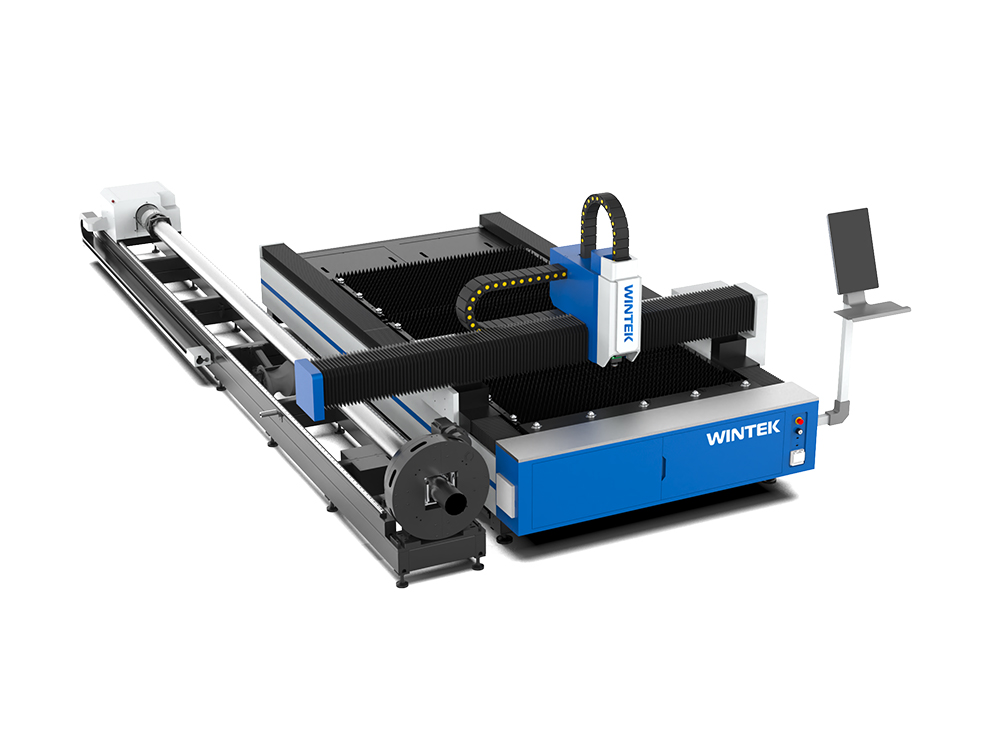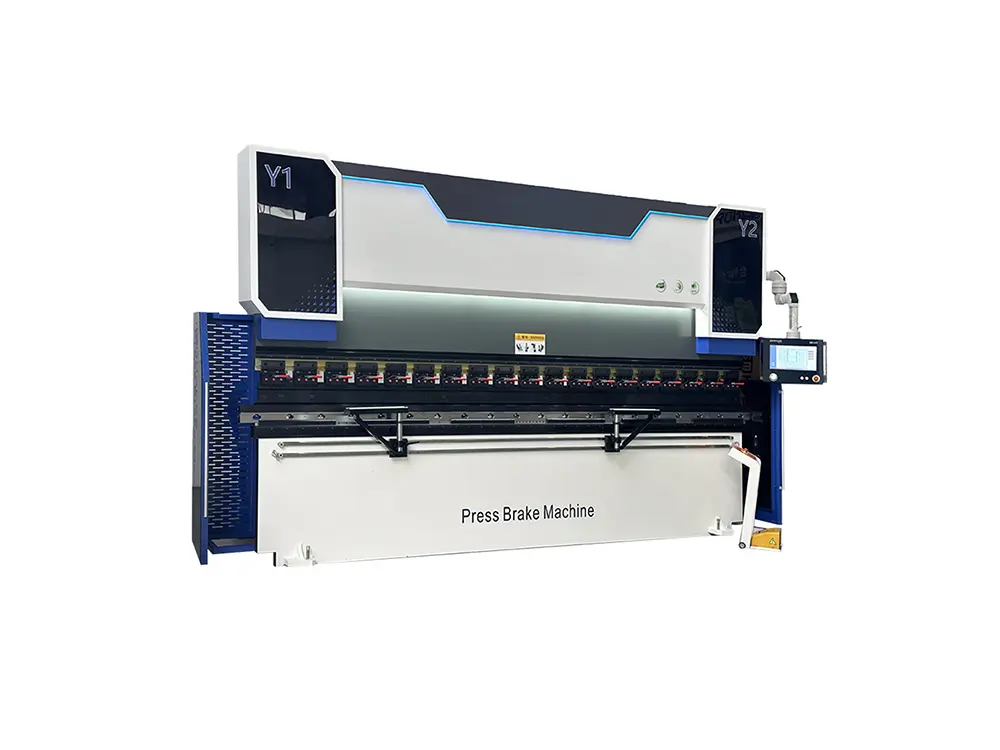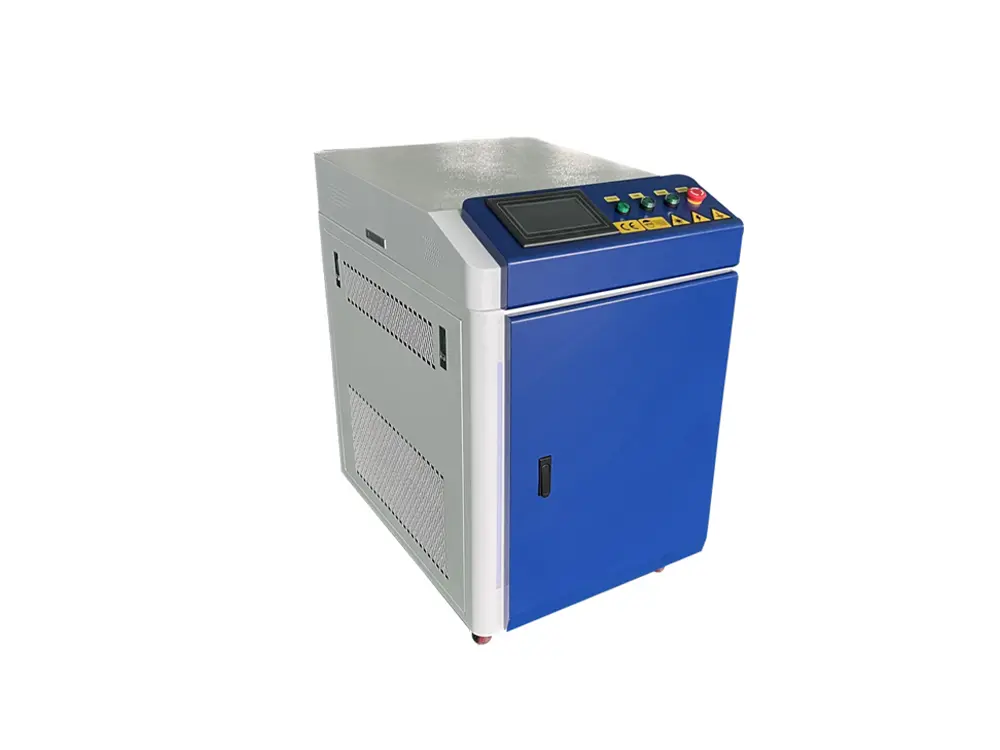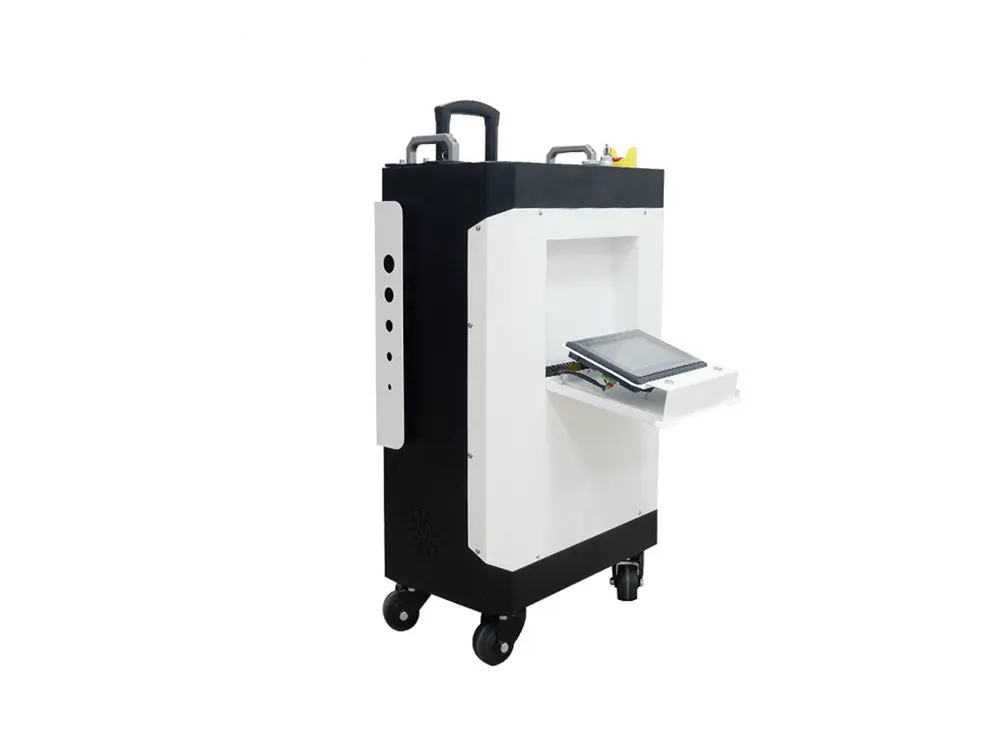Fiber laser welder machines, renowned for their high precision, efficiency, and versatility, have become essential tools in the industrial manufacturing sector. However, many still wonder about their capability to weld materials of varying thicknesses. To address this, Wintek offers a comprehensive overview of the working principles of fiber laser welder machines, explores their maximum welding thickness, and provides practical advice for selecting the right machine to meet your specific needs.
The Working Principle of a Fiber Laser Welder Machine
Fiber laser welder machines operate by directing a high-energy laser beam onto the workpiece, instantly melting the surface material to form a uniform molten pool. This pool solidifies upon cooling, completing the welding process. The laser source typically utilizes a fiber laser, known for its exceptional energy density, stability, and efficiency, making it ideal for a wide range of industrial welding applications.

What Materials Can Be Welded by Laser Welding?
The fiber laser welder is a versatile tool capable of welding a variety of metal materials, including:
-
Stainless Steel
-
Carbon Steel
-
Aluminum
-
Copper
-
Brass
-
Titanium
Common Power and Welding Thickness Ranges
The welding thickness range of fiber laser welder machines varies depending on their power levels. Generally, the approximate thickness ranges are as follows:
| Material | Thickness (mm) | Scan Speed (mm/s) | Scan Width (mm) | Peak Power (W) | Duty Cycle (%) | Pulse Frequency (Hz) | Feeding Speed (cm/s) |
|---|---|---|---|---|---|---|---|
| Carbon Steel | 1 | 300 | 3 | 350 | 100 | 2000 | 60 |
| 2 | 300 | 3 | 700 | 100 | 2000 | 60 | |
| 3 | 300 | 3 | 1100 | 100 | 2000 | 60 | |
| 4 | 300 | 3 | 1500 | 100 | 2000 | 60 | |
| 5 | 220 | 3 | 1800 | 100 | 2000 | 60 | |
| 6 | 220 | 3 | 2200 | 100 | 2000 | 50 | |
| 8 | 220 | 3 | 3000 | 100 | 2000 | 50 | |
| Aluminum | 1 | 300 | 3 | 500 | 100 | 2000 | 60 |
| 2 | 300 | 3 | 800 | 100 | 2000 | 60 | |
| 3 | 300 | 3 | 1400 | 100 | 2000 | 60 | |
| 4 | 300 | 3 | 1800 | 100 | 2000 | 60 | |
| 5 | 220 | 3 | 2000 | 100 | 2000 | 50 | |
| Stainless Steel | 0.5 | 300 | 2 | 260 | 100 | 2000 | 80 |
| 0.8 | 300 | 2 | 300 | 100 | 2000 | 80 | |
| 1 | 300 | 2 | 350 | 100 | 2000 | 60 | |
| 2 | 300 | 2 | 700 | 100 | 2000 | 60 | |
| 3 | 300 | 2 | 1100 | 100 | 2000 | 60 | |
| 4 | 300 | 2 | 1500 | 100 | 2000 | 60 | |
| 5 | 220 | 2 | 1800 | 100 | 2000 | 50 | |
| 6 | 220 | 2 | 2200 | 100 | 2000 | 40 | |
| 8 | 220 | 2 | 3000 | 100 | 2000 | 40 |
Key Factors Affecting Welding Thickness
The welding thickness of a fiber laser welder machine is not a fixed value but is influenced by various factors, including:
1. Laser Power
Laser power is the primary factor determining welding thickness. Higher power results in greater energy density, allowing the welding of thicker materials. For instance, a 1000W fiber laser welding machine is suitable for thin materials, while machines with 3000W or higher power can handle thicker materials.
2. Material Type
The thermal conductivity and melting point of the material significantly affect welding thickness. For example, carbon steel has low thermal conductivity, making it easier to weld thicker sections. In contrast, aluminum alloys, with higher thermal conductivity, require more power to achieve the same welding depth.
3. Welding Technique
The welding method directly impacts the achievable thickness. Techniques like single-sided welding, double-sided welding, or multi-pass welding can increase penetration depth, especially for thicker materials.
4. Shielding Gas
Using appropriate shielding gases, such as argon or nitrogen, optimizes welding results by enhancing penetration and improving weld quality.
5. Beam Quality
A high-quality laser beam with superior focus capabilities ensures deeper penetration and finer welds, allowing for better results with thicker materials.
Advantages and Disadvantages of Fiber Laser Welder Machines
Advantages of Fiber Laser Welder Machines
High Precision and Accuracy
Fiber laser welders produce a highly focused beam, allowing for precise welds with minimal heat distortion, ideal for delicate or intricate tasks.
Versatility in Material Compatibility
Suitable for welding a wide range of metals, including stainless steel, aluminum, carbon steel, titanium, and copper, making them adaptable to various industries.
High Efficiency and Speed
Faster welding speeds compared to traditional methods reduce production time and increase efficiency.
Minimal Heat-Affected Zone (HAZ)
The concentrated laser beam reduces the area exposed to heat, minimizing the risk of material warping or damage.
Strong and Aesthetic Welds
Produces clean, high-quality welds with minimal or no post-processing, reducing the need for grinding or polishing.
Low Maintenance and Long Lifespan
Fiber lasers are durable, with lifespans often exceeding 100,000 hours, and require less maintenance compared to other laser types.
Eco-Friendly Operation
No need for additional materials like filler wires in many applications, resulting in less waste and lower operating costs.
Adaptable Power Levels
Available in a range of power levels (from 1000W to 3000W), enabling welding of materials of various thicknesses.
Disadvantages of Fiber Laser Welder Machines
High Initial Cost
The upfront cost of purchasing a fiber laser welder can be substantial, making it less accessible for small businesses or hobbyists.
Limited for Non-Metal Materials
Fiber lasers are less effective on non-metallic materials, which might require alternative welding methods.
Limited Welding Depth
Due to the nature of laser welding, handheld units tend to have a lower power output compared to stationary machines. This translates to a shallower weld penetration depth. For thicker materials, a more powerful (and industrial) laser welder would be required.
Safety Concerns
Fiber laser welders concentrate a lot of power into a tight beam. Mishandling or improper training can lead to serious eye injuries or burns. Strict safety protocols and proper personal protective equipment (PPE) are essential.
Selecting the Right Machine for Your Needs
- Power Options: Advice on choosing a machine based on the thickness and material you primarily work with.
- Cooling Systems: Why advanced cooling systems are essential for handling thicker materials.
- Adjustable Parameters: How tunable settings like pulse frequency and duty cycle enhance versatility.
- Budget: High-power equipment has a larger initial investment, but has a wide range of applications and is suitable for large-scale industrial applications.
- Brand and service: Choosing a reliable brand and after-sales service can reduce maintenance costs and increase equipment life.
Conclusion
The welding thickness range of fiber laser welder machines varies depending on power, material, and technique, offering solutions for both thin and thick metal plates. When selecting and using a machine, businesses should base their decisions on specific needs and application scenarios to achieve optimal welding results. If you have any questions about choosing or using a fiber laser welder machine, feel free to contact us. Wintek is here to provide you with professional solutions.

